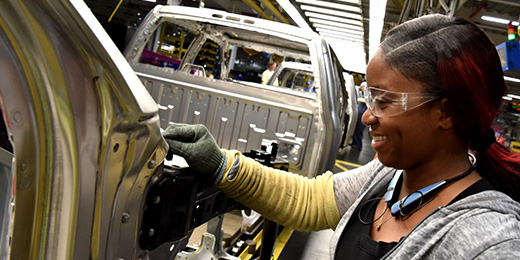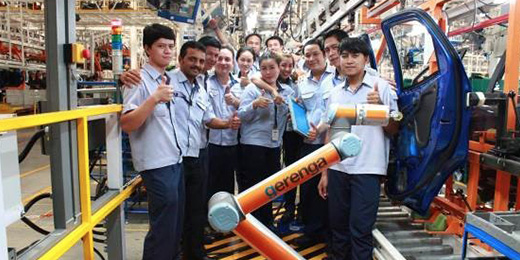People and Communities > Our People >
Health and Safety
On this page:
We are committed to ensuring that our people stay safe and healthy. We have robust policies and practices in place throughout our operations to measure our health and safety performance, demonstrate progress and identify areas for improvement.
Our Approach
How We Manage Health and Safety
Accountability for health and safety performance is established through business planning, policies and scorecards. Business operation and plant managers are responsible for health and safety in the operations they manage, and safety performance forms part of the scorecards of relevant salaried employees. Our president and CEO, our senior operating team, global Manufacturing Operating Committee and regional Occupational Health and Safety (OHS) committees all review safety performance regularly.
Our efforts are guided by our OHS policy, established through corporate Policy Letters and Directives, and our global OHS standards cover all relevant issues, from workplace safety to ergonomics and occupational hygiene to toxicology.
Our Safety Operating System (SOS), part of our overall manufacturing strategy, provides for the health and safety of our employees, and most of our manufacturing facilities have joint union/management safety committees to guide, develop and implement safety programs.
Reinforcing Our Strong Safety Culture
Our safety vision is to achieve no fatalities or serious injuries, and to protect and continually improve the health of our workforce.

Our strong safety culture relies on effective communication and reinforcement through a variety of channels, engaging all employees and contractors in understanding and adhering to safety programs and policies. We hold regular safety talks and occasional safety stand-downs at our plants to focus on key issues, and also use the START Card process to identify when to conduct pre-task briefings and safety assessments.
All employees are encouraged to alert management to every injury or hazard, so that we can take corrective actions and create a safer workplace for everyone. Should a significant incident occur, we can alert health and safety experts at our other facilities so that appropriate action can be taken if necessary.
An Increased Focus on Prevention
Our efforts to make safety a core value across our operations have gone beyond response, toward prevention.
We now use “leading” metrics, such as potentially serious incidents without injury and closure time for identified safety improvements by employees, in our safety scorecard. In 2016, we had 208 high-potential reported events that could have had serious consequences, but didn’t. Each incident was investigated, and we implemented a number of preventive measures.

Globally, we are always looking to utilize new technologies in an innovative way. In 2015, we created a global collaborative robot technical committee that includes cross-functional representation from engineering, operations, safety and our union partners. Our objective was to create a global standard to ensure the safe design and implementation of collaborative robot applications. Collaborative robots provide us with an innovative approach to reducing or eliminating risk factors that have been difficult to solve in the past. An initial pilot application was successfully launched in Thailand in 2015.
At the end of 2016, we were successful in implementing additional collaborative robot applications in India and the U.K., with further projects planned for introduction in North American manufacturing sites in 2017.
As well as striving to predict and eliminate risks during the design stage using “virtual manufacturing” technology, we rely on good relationships with our stakeholders to identify, analyze and eliminate other potential risks. We continue to collaborate with unions to help address unsafe behaviors, and maintain external relationships with regulatory agencies and professional organizations such as the U.S. Occupational Safety and Health Administration.
